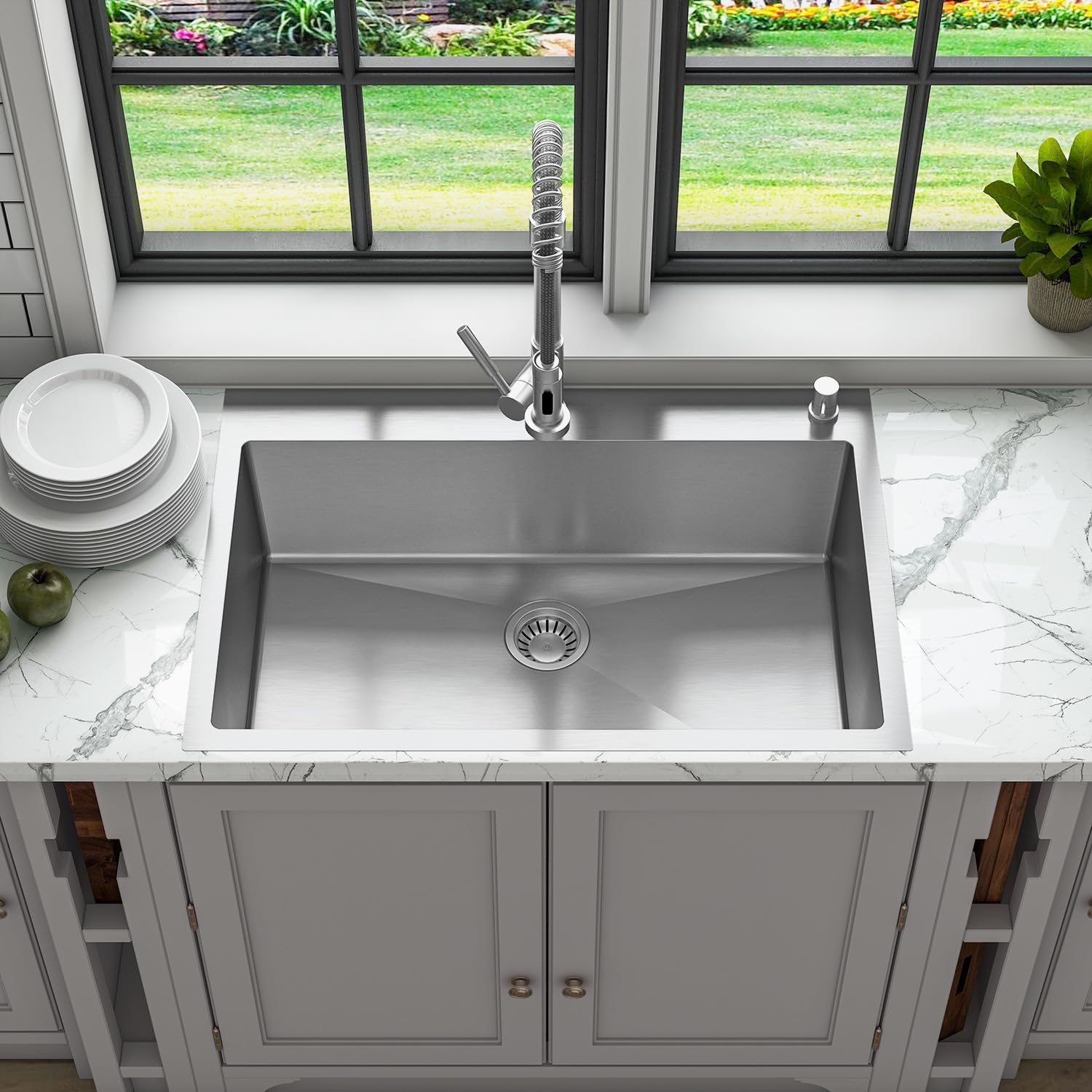
Faucet handles are more than just functional components of your kitchen or bathroom sink; they also play a significant role in the aesthetics and user experience of the space. With numerous styles and designs available, choosing the right faucet handle can be both exciting and overwhelming. This guide explores the different types of faucet handles, their unique features, benefits, and potential drawbacks, helping you make an informed decision for your home.
1. Single-Handle Faucets
Features
Single-handle faucets, also known as single-lever faucets, are designed with one handle that controls both the temperature and the flow of water. The handle can be moved up and down to adjust the water flow and side to side to control the temperature.
Benefits
- Ease of Use: Single-handle faucets are user-friendly, requiring just one hand to operate, which is particularly convenient when your other hand is occupied.
- Space-Saving: Their compact design is ideal for small sinks or countertops where space is limited.
- Modern Look: They often feature sleek and contemporary designs, adding a modern touch to your kitchen or bathroom.
Drawbacks
- Temperature Control: Fine-tuning the exact temperature can be more challenging compared to dual-handle faucets.
- Maintenance: With all functions relying on one handle, any malfunction can affect both water flow and temperature control.
2. Double-Handle Faucets
Features
Double-handle faucets have two separate handles: one for hot water and one for cold water. These handles are usually located on either side of the faucet spout.
Benefits
- Precise Temperature Control: With separate handles for hot and cold water, you can achieve a more precise temperature mix.
- Classic Appeal: Double-handle faucets often feature traditional designs that add a classic charm to your space.
- Durability: If one handle fails, you can still use the other handle to control the water flow, providing a level of redundancy.
Drawbacks
- Space Requirement: They require more countertop or sink space, which might not be ideal for smaller areas.
- Two-Hand Operation: Adjusting the water temperature typically requires using both hands, which can be less convenient.
3. Touchless Faucets
Features
Touchless faucets, also known as sensor faucets, use motion sensors to detect the presence of hands and automatically turn on and off. These faucets are gaining popularity in both residential and commercial settings.
Benefits
- Hygiene: Touchless operation reduces the risk of spreading germs and bacteria, making them a hygienic choice.
- Water Conservation: The automatic shutoff feature helps save water by preventing accidental overuse.
- Convenience: Ideal for busy kitchens or bathrooms, touchless faucets provide ease of use without the need to touch the handles.
Drawbacks
- Cost: They tend to be more expensive than traditional faucets due to their advanced technology.
- Battery Dependency: Some models rely on batteries, which will need regular replacement to ensure functionality.
- Sensitivity Issues: The sensors might occasionally fail to detect motion properly, leading to unintentional water flow or shutoff.
4. Joystick Handle Faucets
Features
Joystick handle faucets have a single lever that operates in multiple directions, similar to a joystick. The lever controls both water flow and temperature.
Benefits
- Modern Aesthetic: Joystick handles offer a sleek and contemporary design that can enhance the look of any modern kitchen or bathroom.
- Space Efficiency: Like single-handle faucets, joystick faucets are compact and ideal for small spaces.
- Ease of Use: They offer simple and intuitive control over water flow and temperature.
Drawbacks
- Temperature Control: As with other single-handle designs, achieving the perfect temperature can be less precise.
- Maintenance: The unique mechanism might require specialized maintenance and repair.
5. Cross Handles
Features
Cross handles, characterized by their cross-shaped design, are commonly found on traditional or vintage-style faucets. They usually come in pairs for hot and cold water.
Benefits
- Classic Style: Cross handles provide a timeless and elegant look that complements traditional or vintage decor.
- Grip: The design offers a good grip, making it easy to turn the water on and off, even with wet hands.
- Durability: Typically made from sturdy materials, cross handles are durable and long-lasting.
Drawbacks
- Two-Hand Operation: Adjusting water temperature typically requires using both handles, which can be less convenient.
- Space Requirement: Similar to other dual-handle designs, they require more space.
6. Knob Handles
Features
Knob handles are small, round handles that can be turned to control water flow and temperature. They are available in single and double configurations.
Benefits
- Variety: Knob handles come in various styles and finishes, offering flexibility in matching your decor.
- Compact: Their small size makes them suitable for sinks and countertops with limited space.
- Easy to Use: They are generally easy to turn, providing straightforward control.
Drawbacks
- Grip: Knobs can be slippery, especially when wet, making them harder to turn.
- Precision: Fine-tuning the temperature and flow can be more challenging compared to lever handles.
Conclusion
Choosing the right faucet handle involves considering both functionality and aesthetics. Single-handle and joystick faucets offer modern convenience and space-saving designs, while double-handle and cross-handle faucets provide precise control and classic appeal. Touchless faucets bring advanced technology and hygiene benefits, whereas knob handles offer versatility in style.
By understanding the features, benefits, and drawbacks of each type of faucet handle, you can make an informed decision that suits your needs and enhances the look of your kitchen or bathroom. Whether you prioritize modern design, classic charm, or cutting-edge technology, there’s a faucet handle out there that’s perfect for you.







